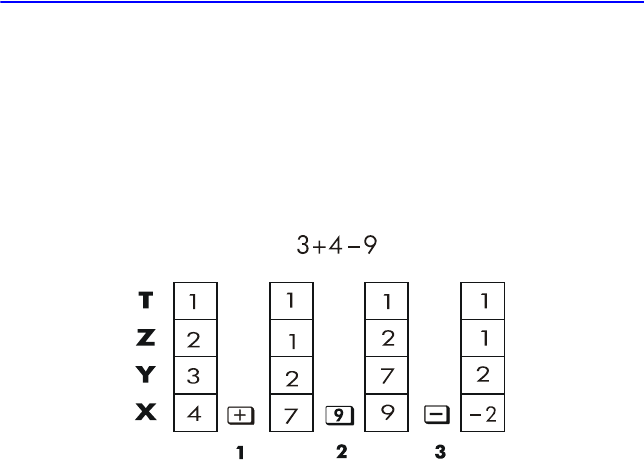
RPN: The Automatic Memory Stack 2-5
Arithmetic – How the Stack Does It
The contents of the stack move up and down automatically as new numbers enter
the X–register (lifting the stack) and as operators combine two numbers in the X–
and Y–registers to produce one new number in the X–register (dropping the stack).
Suppose the stack is filled with the numbers 1, 2, 3, and 4. See how the stack drops
and lifts its contents while calculating
1. The stack "drops" its contents. The T–(top) register replicates its contents.
2. The stack "lifts" its contents. The T–register's contents are lost.
3. The stack drops.
Notice that when the stack lifts, it replaces the contents of the T– (top) register
with the contents of the Z–register, and that the former contents of the T–
register are lost. You can see, therefore, that the stack's memory is limited to
four numbers.
Because of the automatic movements of the stack, you do not need to clear
the X–register before doing a new calculation.
Most functions prepare the stack to lift its contents when the next number
enters the X–register. See appendix B for lists of functions that disable stack
lift.


















